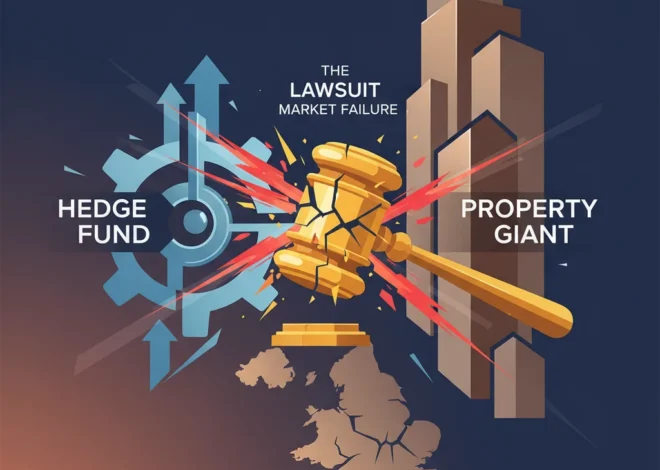
The Great Crypto Filter: Why Regulatory Attacks Are a Blessing in Disguise
The Great Crypto Filter: Why Regulatory Attacks and Market Turmoil Are Forging a Stronger Financial Future
The sentiment surrounding the cryptocurrency market often feels like a pendulum swinging between unbridled euphoria and existential dread. In recent years, the dread has been palpable. High-profile collapses, accusations of fraud, and a global regulatory crackdown have led many to question the viability of the entire digital asset class. Headlines scream of a “crypto winter,” and the chorus of skeptics grows louder by the day. Yet, a compelling, contrarian perspective suggests this period of intense pressure is not a death knell but a crucial, cleansing fire.
In a succinct but powerful letter to the Financial Times, Nathan James Montone, Chief Executive of M31 Capital, articulated this view perfectly. Faced with the idea that cryptocurrency is under attack, his response was simple: “bring it on”. This isn’t just bravado; it’s a strategic embrace of a painful but necessary market evolution. The current turmoil—the bankruptcies, the lawsuits, the regulatory scrutiny—is a powerful filtering mechanism. It’s a process that weeds out the weak, the fraudulent, and the unsustainable, leaving behind a stronger, more resilient foundation for the future of finance.
This “great filter” is not just about survival of the fittest; it’s about forging an industry mature enough to integrate with the global economy. It’s about separating the speculative froth from the core technological innovation of blockchain. For serious investors, finance professionals, and business leaders, understanding this dynamic is key to navigating the future of financial technology and identifying the opportunities that will emerge from the ashes.
Echoes of History: Lessons from the Dot-Com Bubble
To understand the present, we must look to the past. The current state of the crypto market bears an uncanny resemblance to the dot-com bubble of the late 1990s and early 2000s. That era was characterized by irrational exuberance, where companies with little more than a “.com” in their name achieved astronomical valuations on the stock market. Venture capital flowed freely, and the promise of a new digital economy seemed limitless.
Then, the bubble burst. Between March 2000 and October 2002, the tech-heavy Nasdaq Composite index plummeted by nearly 78% (source). Companies that had become household names, like Pets.com and Webvan, vanished overnight. The crash was brutal, wiping out an estimated $5 trillion in market value and shaking confidence in the technology sector.
But what happened next is the crucial lesson. The internet didn’t die. The crash didn’t invalidate the transformative power of digital connectivity. Instead, it purged the market of unsustainable business models and speculative excess. The companies that survived—and the new ones that rose from the rubble, like Google and a revitalized Amazon—were those built on solid foundations, with real utility and a clear path to profitability. The dot-com crash was the filter that separated the hype from the truly revolutionary.
The parallels with the crypto market are striking. We have seen similar cycles of speculative frenzy followed by dramatic corrections. The key takeaway is that the underlying technology—the internet then, blockchain now—remains sound, even as the market for its early applications undergoes a painful but necessary correction.
To illustrate this comparison, consider the scale of these market corrections:
| Market Event | Index / Asset | Peak-to-Trough Decline | Key Failures | Long-Term Survivors |
|---|---|---|---|---|
| Dot-Com Bubble Burst (2000-2002) | Nasdaq Composite | ~78% | Pets.com, Webvan, eToys.com | Amazon, eBay, Priceline (Booking Holdings) |
| Crypto Winter (2021-2022) | Total Crypto Market Cap | ~70% | FTX, Celsius, Terra/Luna | Bitcoin, Ethereum, established Layer-1 protocols |
This historical context suggests that the current downturn is not an end, but a transition. It’s a shift from a market driven by hype to one defined by value, a critical step in the maturation of any groundbreaking technology.
Wall Street's Warning Bell: Is the US Financial System's Plumbing About to Clog Again?
The Purge: Separating Signal from Blockchain’s Noise
The “attack” on crypto isn’t a monolithic assault on a single entity. It’s a multi-faceted process that targets different weaknesses within the ecosystem. The most prominent failure in recent memory, the collapse of FTX, serves as a perfect case study. Many critics were quick to label it a failure of crypto. In reality, it was a profound failure of traditional corporate governance, risk management, and basic ethics.
As detailed in numerous reports, FTX’s demise was caused by the commingling of customer funds, a lack of internal controls, and alleged fraud by its leadership—issues that have plagued traditional finance for centuries (source). The failure was human and organizational; the blockchain technology itself continued to operate as designed. Bitcoin and Ethereum networks didn’t halt; decentralized finance (DeFi) protocols built on transparent, auditable smart contracts continued to process transactions without a bailout.
This distinction is vital. The current filter is effectively removing:
- Centralized Bad Actors: Opaque, poorly managed centralized platforms that operate like unregulated banks are facing the consequences of their recklessness.
- Unsustainable Models: Projects built on flawed tokenomics or algorithmic models that proved fragile under stress are being exposed.
- Low-Utility Projects: The bear market starves projects with no real-world use case or community, forcing a focus on building tangible value.
This purge forces capital and talent to migrate toward higher-quality projects. It accelerates a “flight to quality,” where the blockchains and applications with robust security, genuine decentralization, and clear utility gain prominence. This is the essence of market-driven natural selection, and it is profoundly healthy for the long-term prospects of financial technology.
The Architect of Maturity: Regulation as a Foundation, Not a Foe
For many crypto purists, the word “regulation” is anathema, representing an intrusion by the very centralized powers they seek to circumvent. However, for an industry to achieve mainstream adoption and integrate into the global economy, a clear and intelligent regulatory framework is not a hindrance—it’s an absolute necessity.
Uncertainty is the enemy of institutional investment. Pension funds, asset managers, and corporations cannot allocate significant capital to an asset class operating in a gray legal area. Thoughtful regulation provides the clarity and guardrails needed for these major players to enter the market. It creates a safer environment for everyone involved by:
- Protecting Consumers: Establishing standards for disclosure, custody of assets, and preventing market manipulation.
- Ensuring Financial Stability: Creating rules to prevent crypto-related risks from spilling over into the traditional banking system.
- Fostering Innovation: Providing a clear rulebook that allows legitimate entrepreneurs to build with confidence, knowing they are operating within legal bounds.
We are already seeing this take shape globally. The European Union’s Markets in Crypto-Assets (MiCA) regulation is a landmark piece of legislation that provides a comprehensive framework for crypto-asset service providers across the bloc (source). While not perfect, it represents a major step toward the kind of regulatory clarity the industry needs. Similar discussions are underway in the US, UK, and other major financial hubs. This regulatory “attack” is, in fact, the construction of the foundational infrastructure required for the next phase of growth.
Steel Over Startups: Decoding the UK's High-Stakes Pivot in Industrial Strategy
Implications for the Future of Investing and the Economy
The convergence of this market purge and emerging regulatory clarity has profound implications for all stakeholders in the financial world. The era of indiscriminately investing in any project with a whitepaper is over. The future belongs to the discerning.
For Investors: The investment thesis for digital assets is shifting from short-term speculative trading to long-term, value-oriented investing. The focus must now be on fundamentals. Does this project solve a real problem? Is the team credible? Is the network secure and decentralized? Is the economic model sustainable? The survivors of this crypto winter will likely be the blue-chip assets of the next decade, akin to buying Amazon stock in 2002.
For Finance Professionals and Banking: The maturation of blockchain technology presents both a threat and an opportunity. As a more stable and regulated digital asset class emerges, it will become an integral part of portfolio diversification and wealth management. Furthermore, the underlying technology offers a path to revolutionize everything from cross-border payments and trade finance to stock market settlement, forcing traditional institutions to adapt or be left behind.
For Business Leaders and the Broader Economy: The true potential of this technology extends far beyond finance. Blockchain offers a new paradigm for managing data, verifying ownership, and automating complex processes. As the speculative noise dies down, leaders in logistics, healthcare, media, and beyond can begin to seriously explore how to leverage this financial technology for efficiency, transparency, and innovation within their own industries.
Crypto Crossroads: Is This a Bearish Breakdown or a Bullish Reversal in Disguise?
Conclusion: Embrace the Challenge
The attacks on cryptocurrency—from market forces, regulatory bodies, and public opinion—are not signs of its impending doom. They are the catalysts of its evolution. This intense pressure is forcing the industry to grow up, to shed its speculative immaturity, and to prove its utility in the real world. It’s a painful process, but it is forging a sector that is more robust, reliable, and ultimately, more valuable.
Just as the dot-com bust paved the way for the titans of Web 2.0, this “great crypto filter” is clearing the path for the foundational protocols and applications of a new financial infrastructure. The future of finance and investing will be built not on the hype of the bull market, but on the resilience forged in the fire of the bear market. So, when the industry comes under attack, perhaps the only logical response for those with a long-term vision is, indeed, to “bring it on.”


